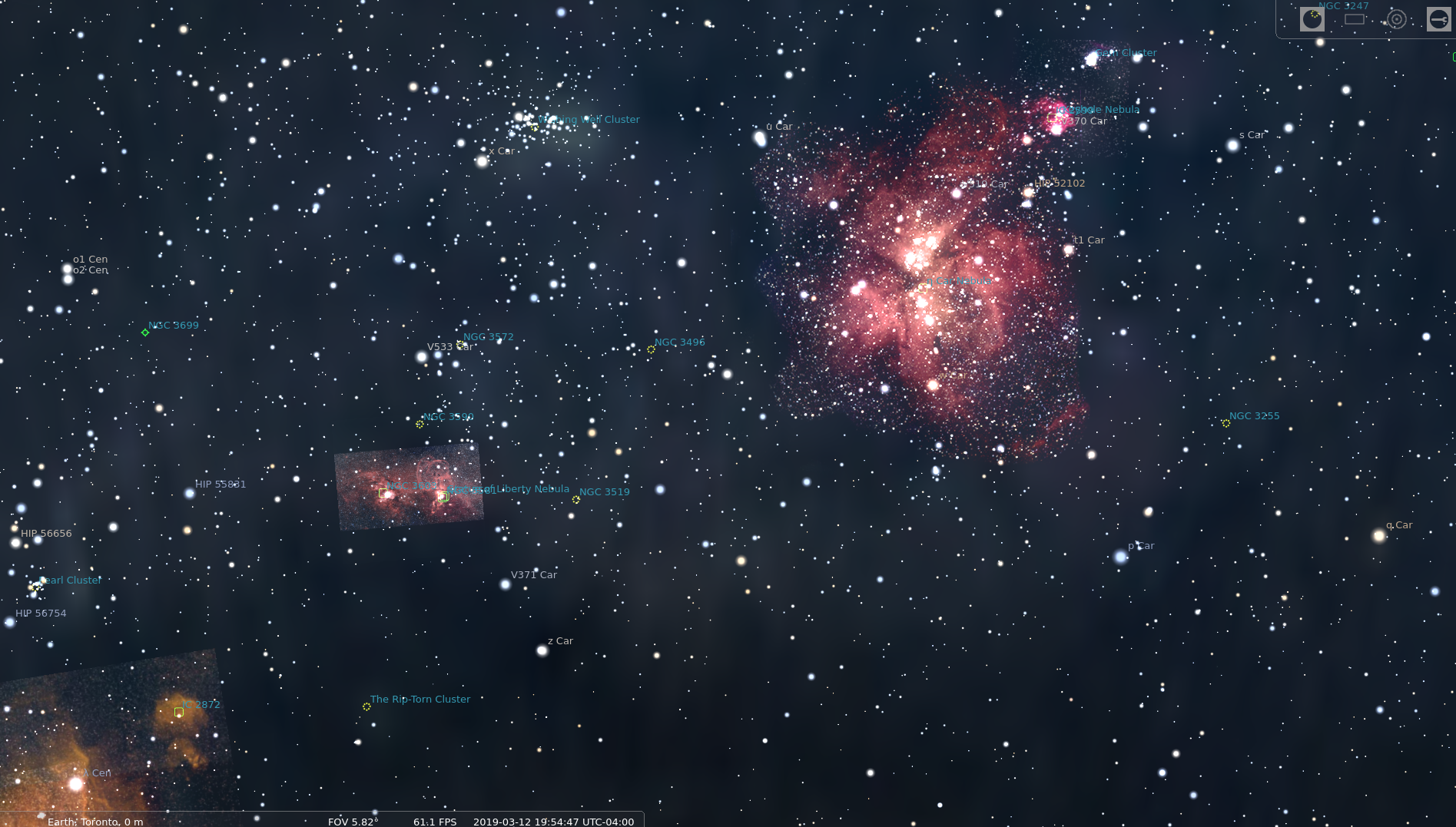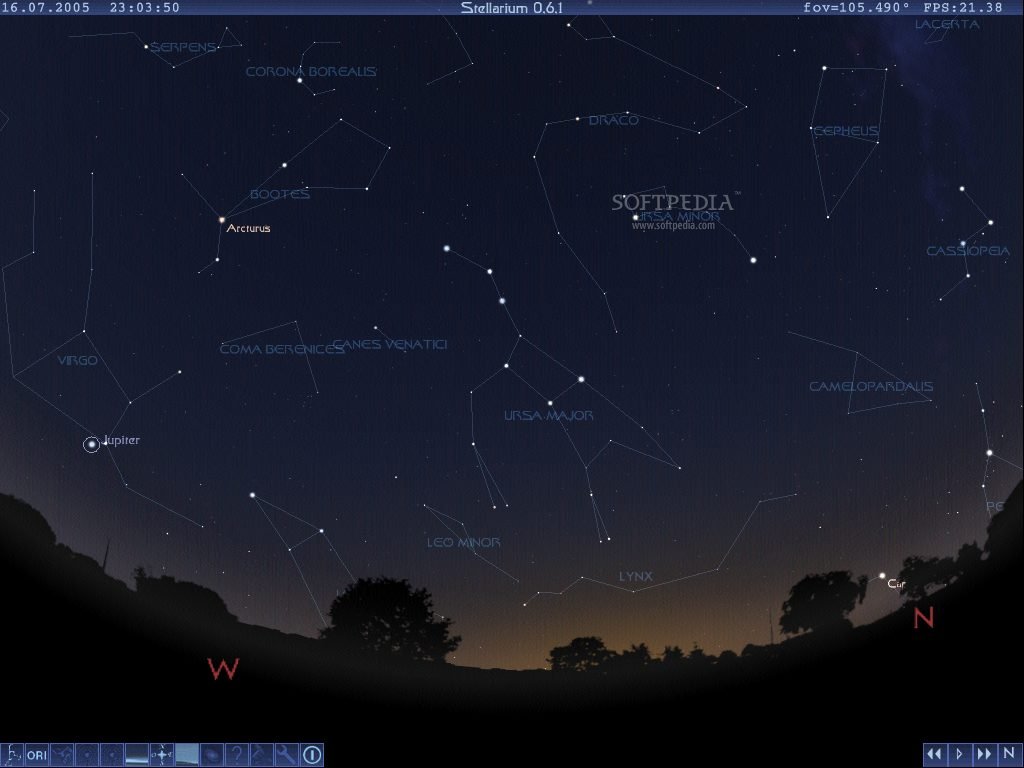

When you reopen Stellarium, you’ll see a new toolbar has appeared in the top right of the screen. In the window that appears, scroll down the menu on the left to ‘Oculars’ then click on the ‘Load at startup’ button at the bottom. The plug-in can be activated by accessing the ‘Configuration’ window using the F2 button, then clicking on the ‘Plug-ins’ tab. Of all the plug-ins in the program this is the one we use the most and its ease of use makes it a superb tool for planning astrophotos. Stellarium comes with an extremely useful feature – the ‘Oculars’ plug-in – that allows you to simulate the field of view of a given eyepiece and telescope combination as well as overlay the field of view of a camera and optics setup onto the sky. Now that you've got the hang of things, we'll delve deeper into Stellarium to look at some of the useful plug-ins for imagers and observers Simulating eyepiece and camera fields of view They can be ‘locked’ in place by clicking the tiny triangles on the ‘L’-shaped tab in the bottom-left of the Stellarium window. Ordinarily Stellarium's two onscreen toolbars are hidden unless you move your cursor near them. The ‘Landscape’ and ‘Starlore’ tabs give the option to change the foreground scenery and alter which culture’s star names and constellation patterns are used. You can simulate light pollution to work out what’s visible from an urban observing site.įrom the ‘DSO’ tab you can choose which catalogues of deep-sky objects are flagged, while the ‘Markings’ tab allows you to switch between various celestial markers, lines and coordinate grids. From the ‘Sky’ tab you can change the size of the stars, adjust the number of labels and limit star magnitudes, which is useful for decluttering the chart. Pressing F4 brings up a ‘Sky and viewing options’ window where you can customise Stellarium’s view. We like to set the ‘Absolute scale’ to 2.20 and the ‘Relative scale’ to 0.50, as that gives a more photorealistic look that’s useful for astrophotography planning. Stellarium allows you to customise the size of stars relative to each other on-screen (press F4, Sky tag). Pressing the ‘return’ key on a successful search will immediately centre that object on the screen. Stellarium’s search menu can be accessed by pressing F3.

To zoom in on a specific target first left click on it, then press the spacebar to centre it before using the zoom keys (as above).
WHERE IS THE STELLARIUM PLUS
To zoom in and out use ‘ctrl’ (or ‘cmd’ on a Mac) plus the up and down arrows, or you can use a roller wheel on a mouse. To explore the sky in Stellarium you can drag it round with your mouse or use the arrow keys on a keyboard.

You can even select an extra-terrestrial viewing location if you want to simulate the sky from other bodies within the Solar System.

In that window, you can then choose a location by either by: clicking on a world map then selecting from a list of nearby places typing in a town or city or, alternatively, inputting an exact longitude and latitude. The menu can be accessed by clicking on the compass icon in the left-hand toolbar or by pressing F6 to bring up the ‘Location’ window. Selecting the location from which you want to view the sky in Stellarium is simple. You can customise this display in the ‘Information’ tab of the Configuration Window, which can be accessed by pressing F2. You’ll see information about the object appear at the top of the screen, including its name and other useful astronomical data, such as its magnitude and catalogue numbers.
WHERE IS THE STELLARIUM WINDOWS
These access further configuration windows which enable you to select the location you’re observing from and set the date and time, along with several display and general program configuration menus allowing you to tailor what’s shown on screen, plus the Search tool and the Help window.ģ If you have the Oculars plug-in enabled (see further down in Simulating eyepiece and camera fields of view) you will see a set of icons relating to it in the top right-hand corner of the screen.Ĥ If you left click on a celestial object from the main screen, the object will acquire a small rotating ‘target’ around it (stars) or a bouncing blue ‘frame’ (other objects). This bar is also where some plug-in buttons will appear.Ģ Hidden on the bottom-left edge of the screen is another toolbar with several icons. Placing your cursor over this bar will raise it to reveal buttons that can toggle various display settings such as constellation lines and star labels. The bar along the bottom shows key information such as the location, the field of view (FOV) and the time. 1 The Stellarium main screen has two main toolbars.


 0 kommentar(er)
0 kommentar(er)
